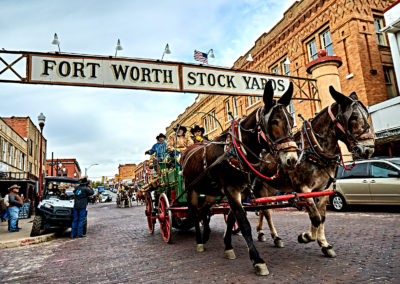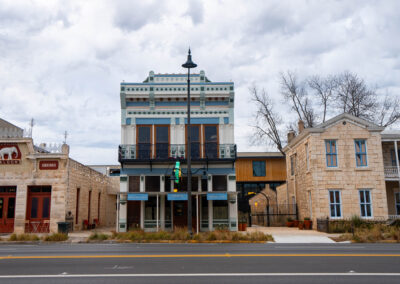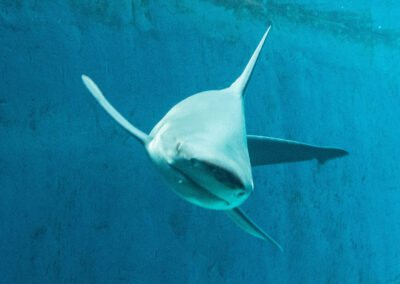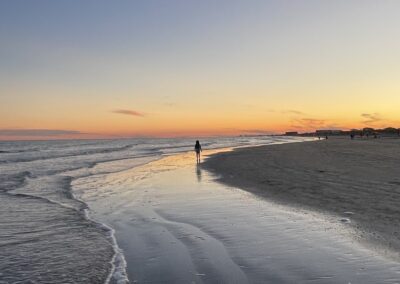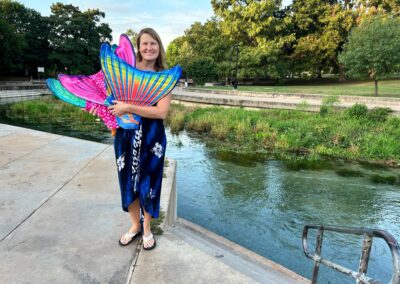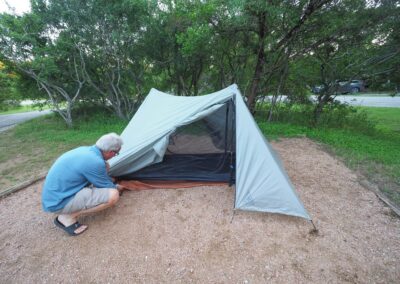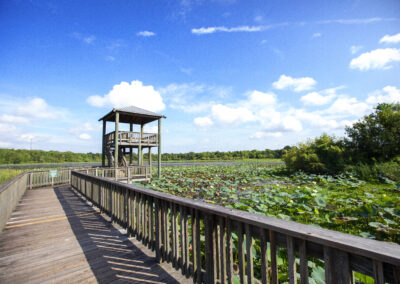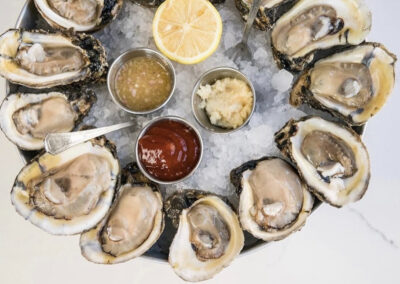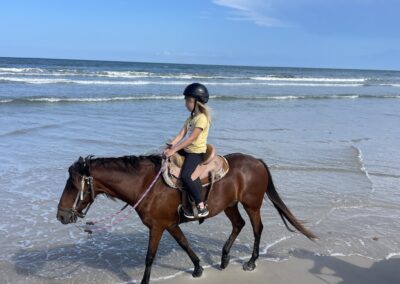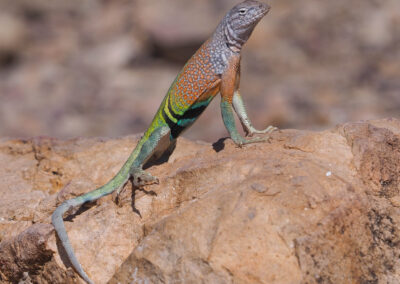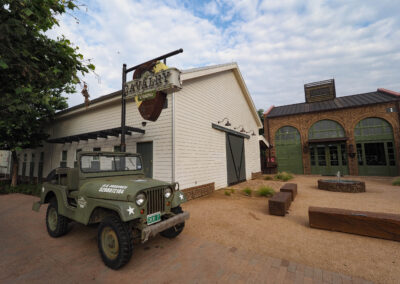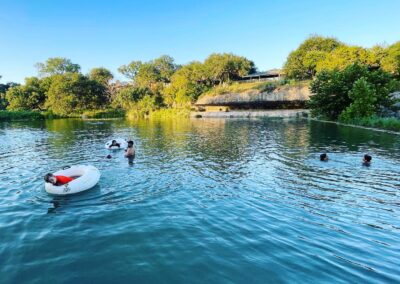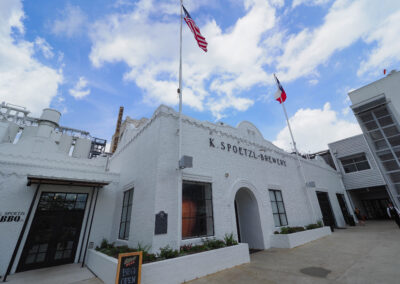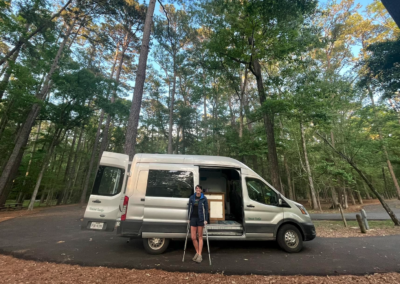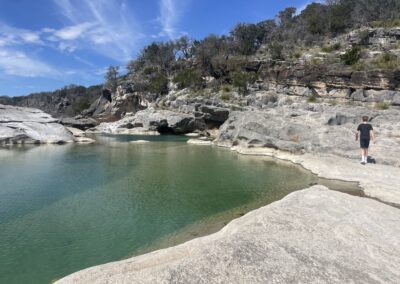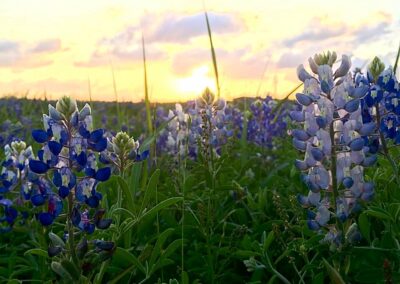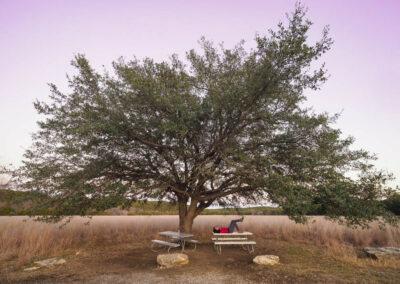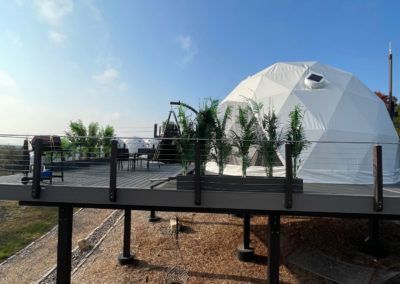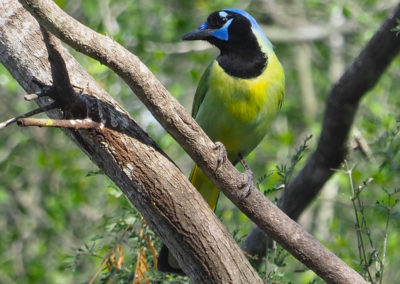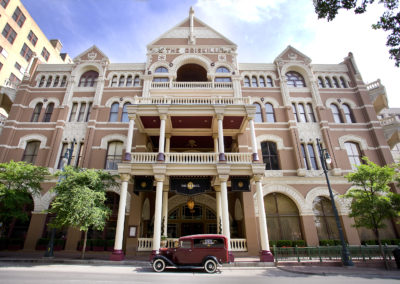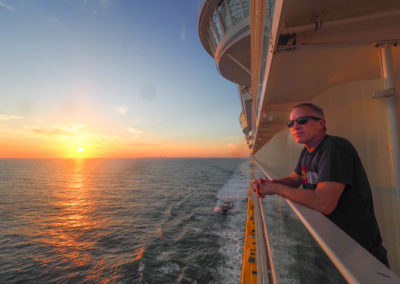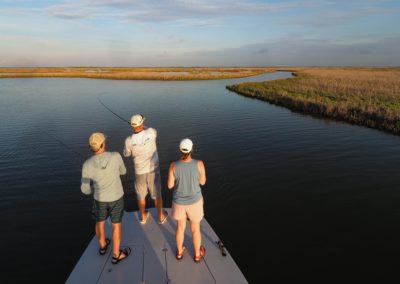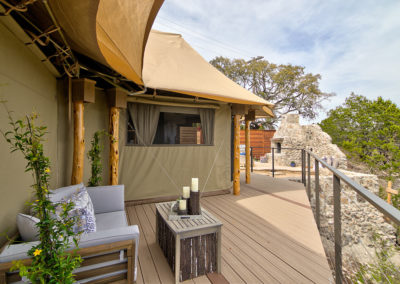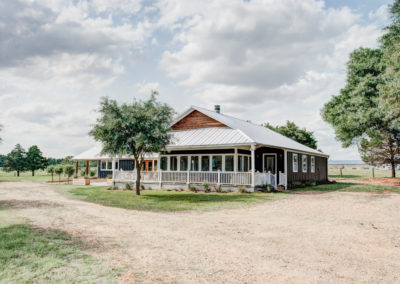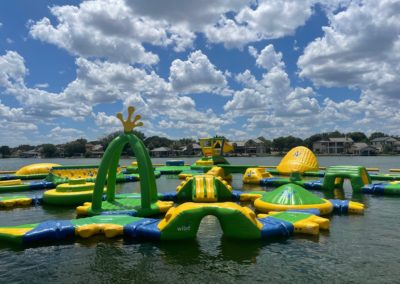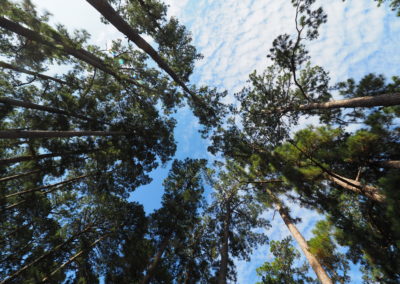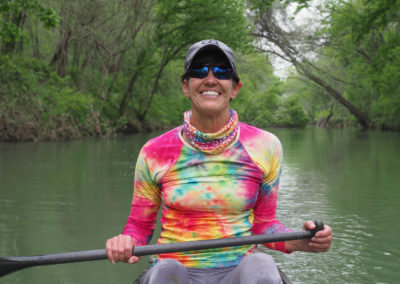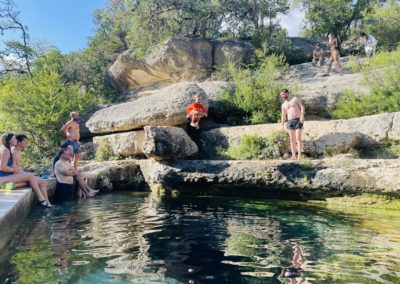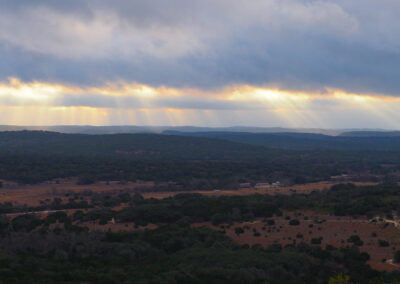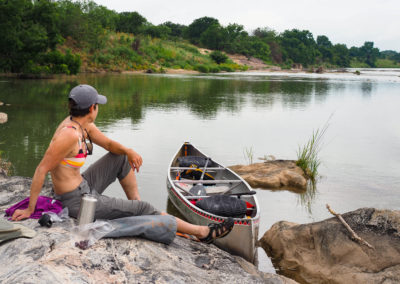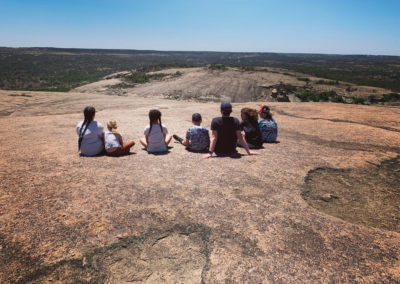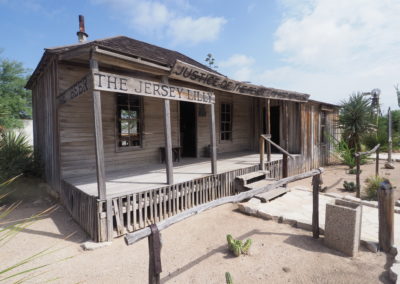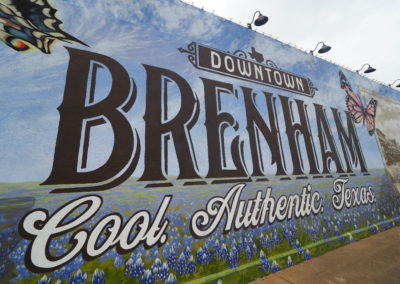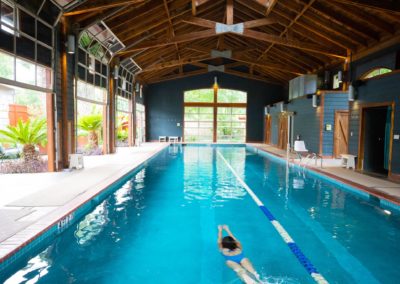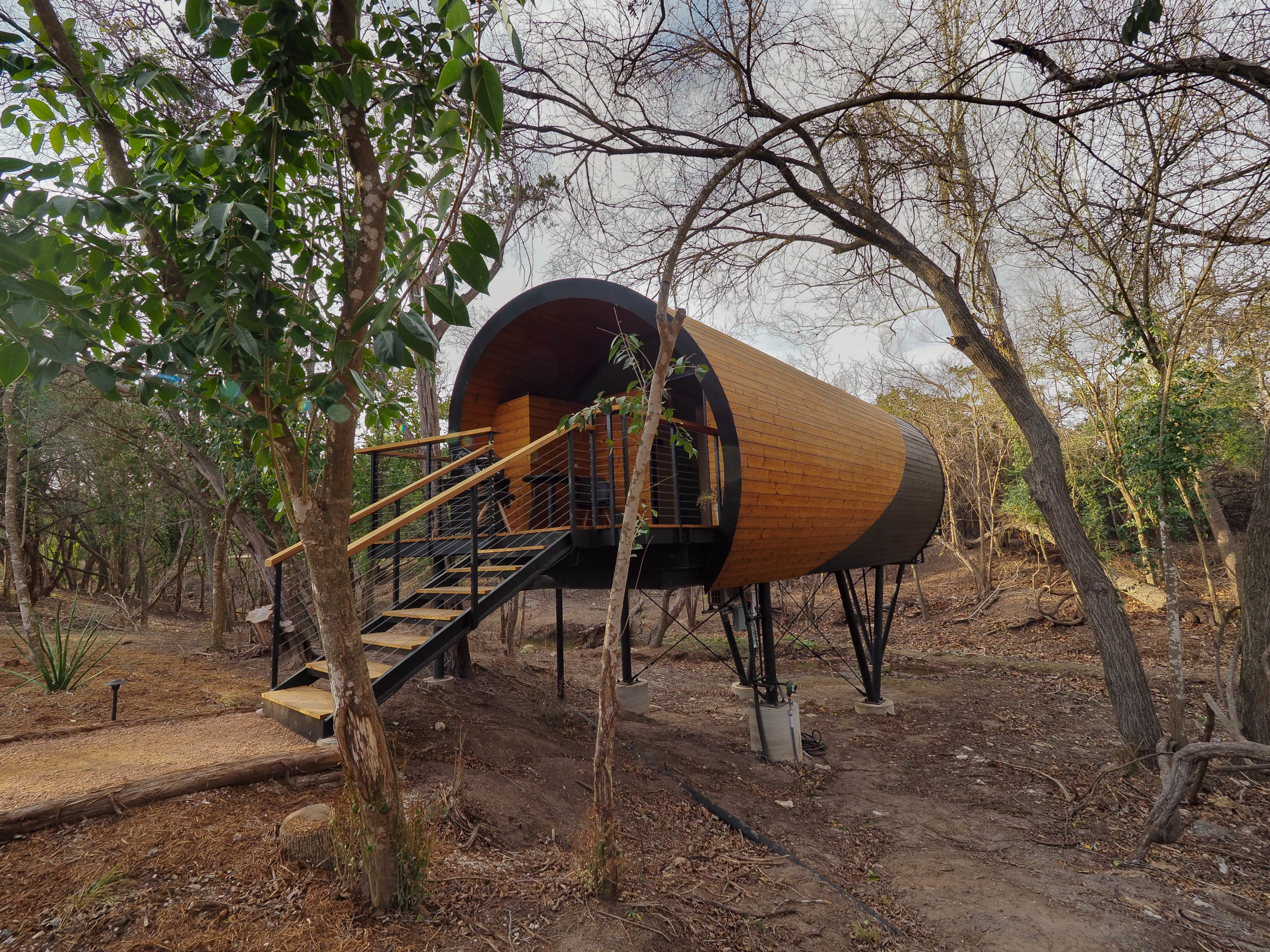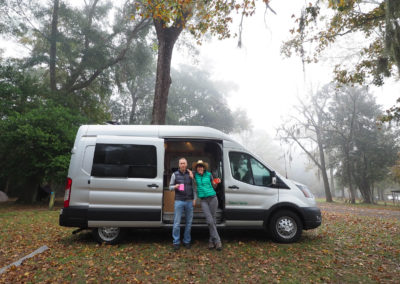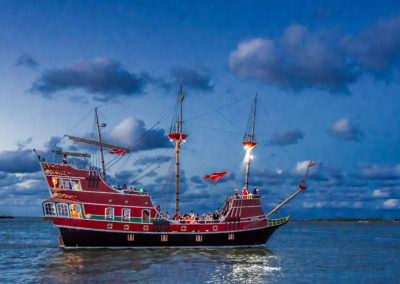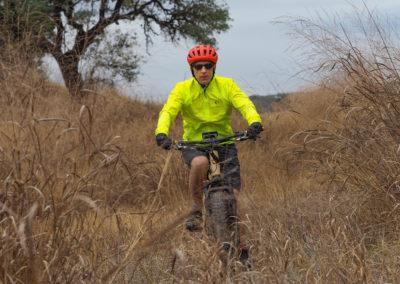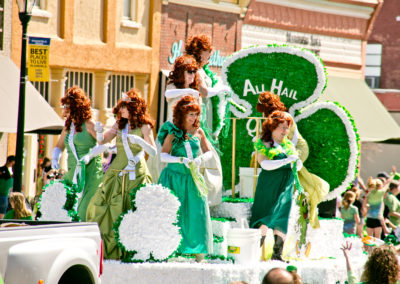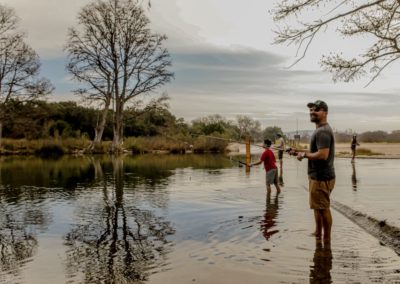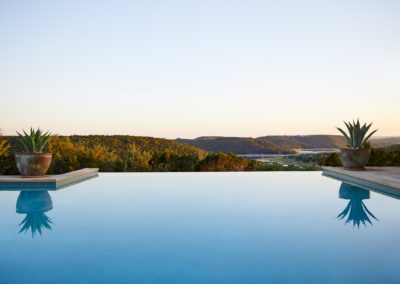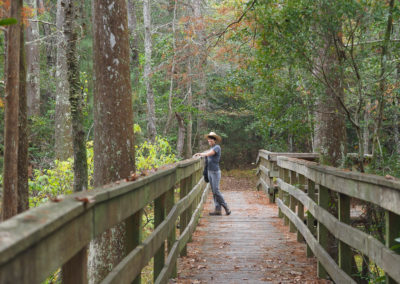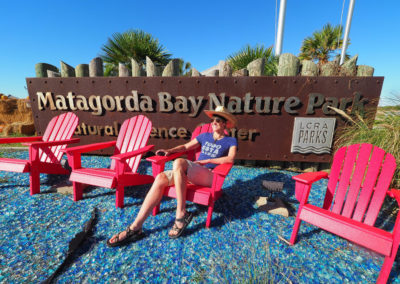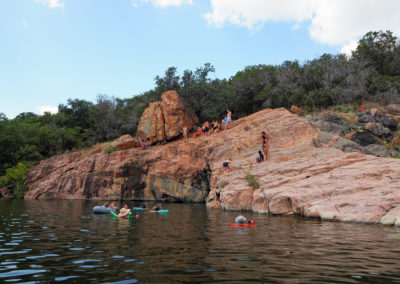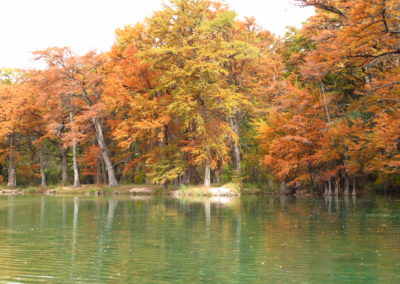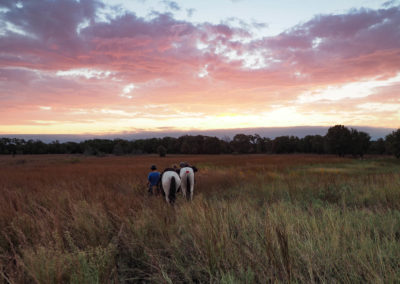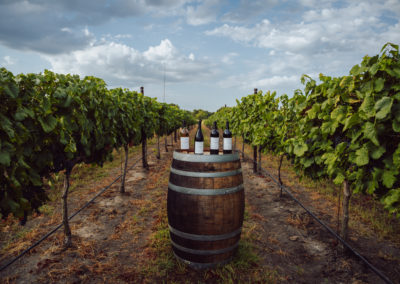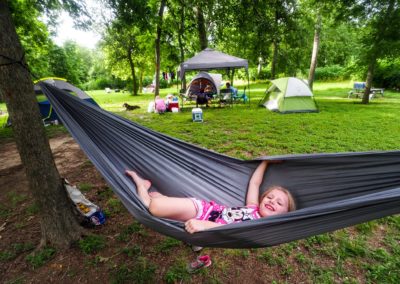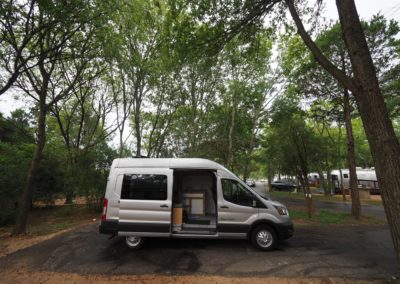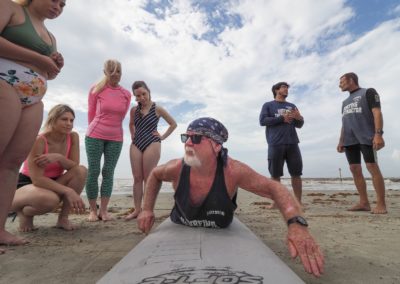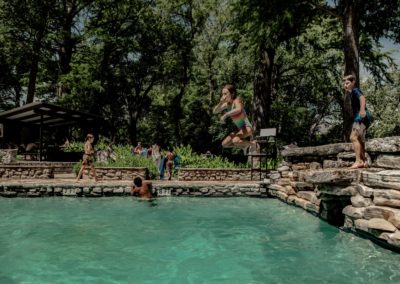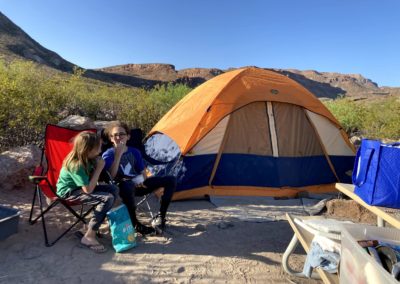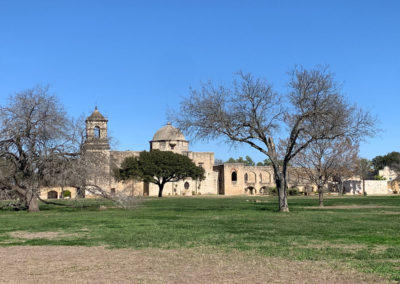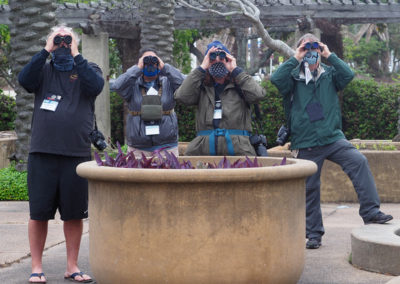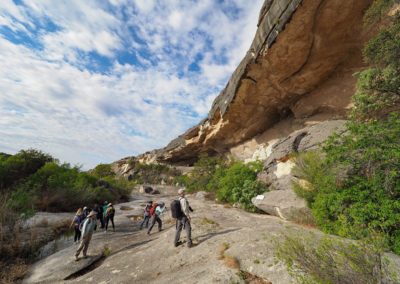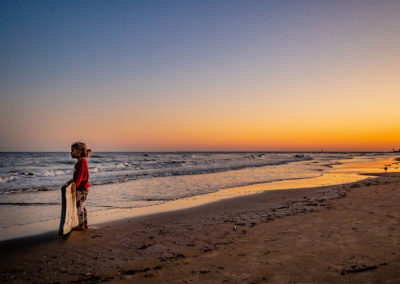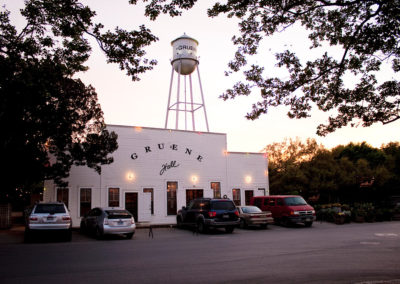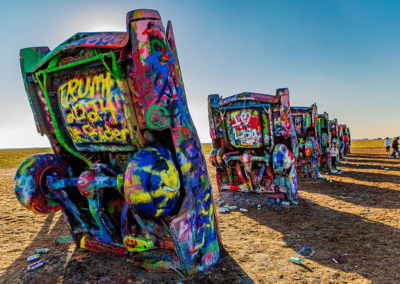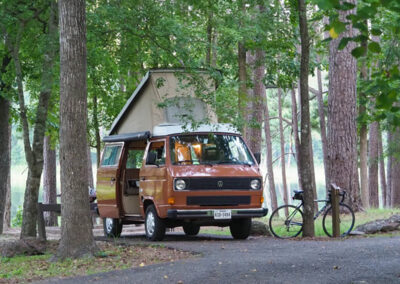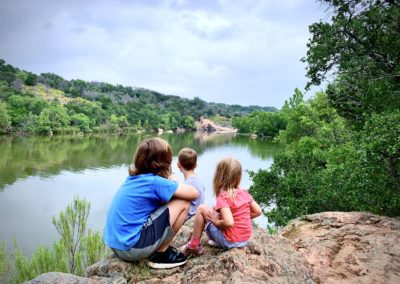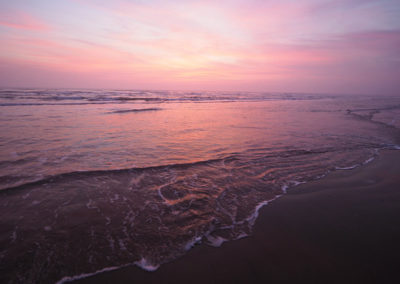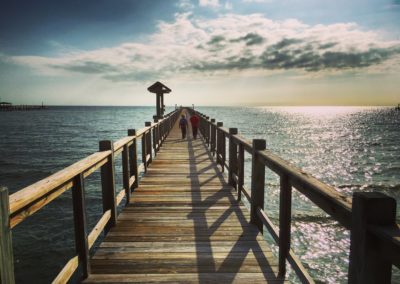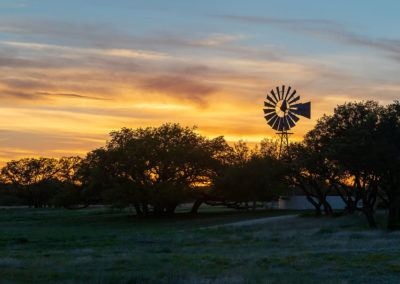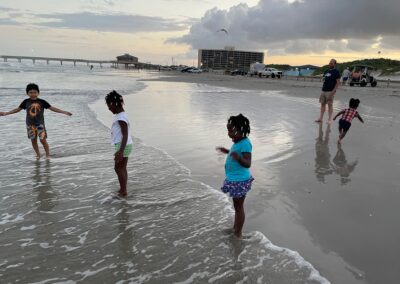
Paddlers make their way down the Devils River on a golden afternoon in October 2020. Pam LeBlanc photo
I’ve paddled the Devils River in West Texas four times, but last fall’s trip, which coincided with the annual monarch migration, looked and felt different.
As soon as we dropped our canoes in the water at Baker’s Crossing, clouds of orange and black butterflies began flapping against the familiar ribbon of turquoise. And it wasn’t just the butterflies. The angle of the mid-October sun burnished everything along the river –– all the leaves and grasses and humming insects –– in nature’s gold.
Something about paddling a West Texas river sets me free. I first paddled the Devils in 2018, and the Pecos River a year later. It’s hard to pick a favorite, but the Devils can’t be beat for spring-fed swimming holes and incredible, pure Texas scenery.
It’s challenging, and even experienced paddlers will finish the trip with bashed shins and skinned knuckles, but the rewards are huge.
The chaos of city life falls away. Instead of laptops, smart phones and automobiles, you ease into a world of paddle strokes, moving water and wildlife.

Marion Burch relaxes in a hammock during a paddle trip on the Devils River in October 2020. Pam LeBlanc photo
RELATED: Fort Collins: Paddling, Hiking and Biking, Oh My
Plan your trip
First, the basics. I drove out to the river with a small group of friends on a Monday. We stayed at long-time outfitter Gerald Bailey’s rental house that night and hired him to shuttle us two hours to the put-in at Baker’s Crossing early the next morning. (I’ve also done this trip by staying at a hotel in Del Rio the night before launching.) From there, we spent five leisurely days paddling through a rugged and prickly slice of Texas. That gave us plenty of time to fish, swim and lollygag before pulling off the river at Bailey’s and driving back home on a Saturday.
If you want to run the Devils, you’ve got two choices: Camp on islands along the way, as we did this time, or get a Devils River Access Permit from the Texas Parks and Wildlife Department, which allows you to pitch a tent at designated paddle camps between Baker’s Crossing and the Dan Hughes (lower) unit of the Devils River State Natural Area.
I’ve done both, and either way, it’s important to protect the river, pack out everything that you bring in, and respect private property along the way. Whatever you do, don’t trespass on private land.
If you paddle all the way to Dan Hughes, it’s a 30-mile trip. You can also paddle all the way to Rough Canyon Marina at Lake Amistad, but you’ll have to slog through notoriously choppy lake water and reed mazes to get to the point at Mile 47 if you do. We took out at Bailey’s place at Mile 22.
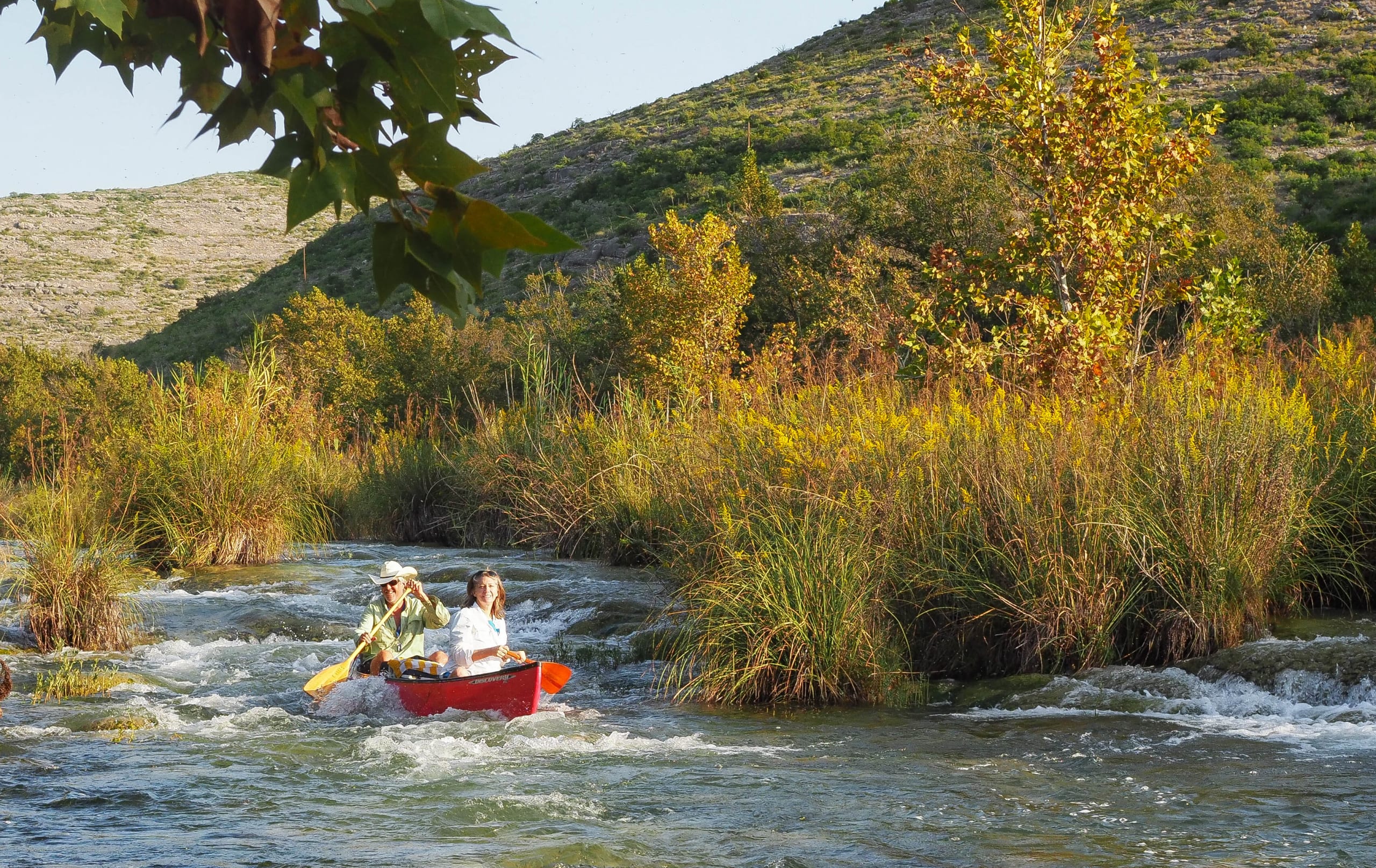
Jimmy Harvey and Marion Burch paddle through small rapids on the Devils River in October 2020. Pam LeBlanc photo
Paddling down the river
Not long after we started, paddling compadre Jimmy Harvey reeled in (and subsequently released) the first fish. Half an hour later, a group of wild pigs swam across the river in front of us.
And then, like leaves blowing across the road, the monarchs made their appearance. I’ve never seen so many delicately flapping orange and yellow wisps in my life.
We gave each other river names (my husband and I got Corndog and Spam, or Team Salty Pork for short), and settled in for days of navigating rapids, getting lost in reed mazes and judging the merits of each new teal-colored swimming hole. This river offers the best swimming on the planet, and I don’t say that lightly.
RELATED: Women, Wind and Waves: Surfing for Adventure
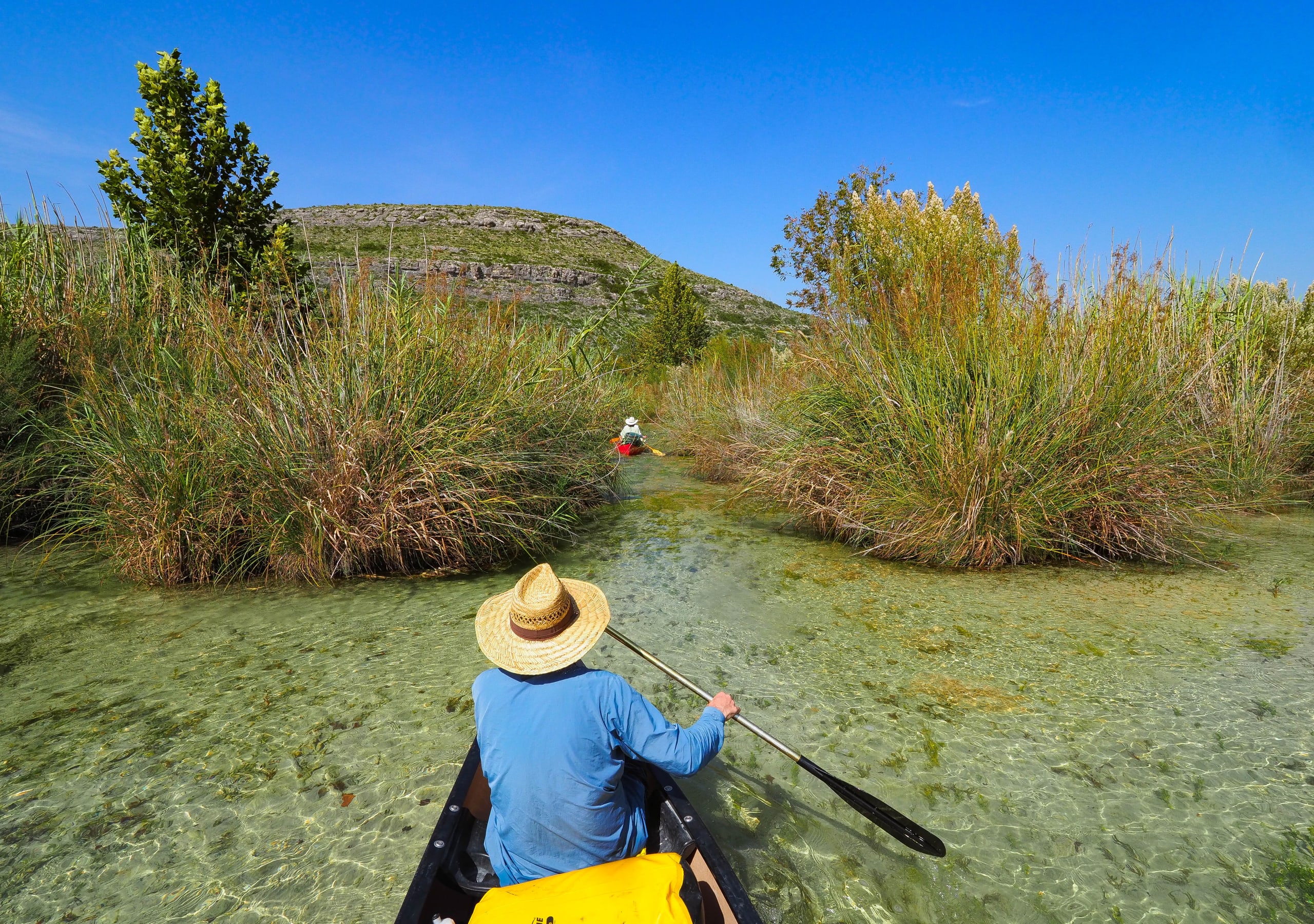
Chris LeBlanc paddles into reed mazes on the Devils River in October 2020. Pam LeBlanc photo
We loaded our canoes with coolers filled with steaks, sausage and thick pork chops, home-grown tomatoes, eggs, bagels and coffee. We toasted the stars every night with beer, wine and whiskey.
The scenery along the river reminds me of an old Western movie: Cactus- and brush-covered hillsides, dotted with big, cracked boulders. A snake coiled on a rock beneath a creaky old oak. Circling vultures. A pair of porcupines snoozing in a couple of trees. And, best of all, an endless procession of swimming holes –– deep, clear pools of water that make me swoon. That kind of water’s best felt against your skin, so I peeled off my clothes and skinny dipped.
One of my favorite parts? Listening to Harvey and Steffen Saustrop, another paddler in our group, tell stories about the weeks they spent here as kids, when Harvey’s father held a lease on the river. They pointed out boulders they’d climbed 40 years ago, when they were sent out and told, “Don’t get hurt and bring back dinner.”
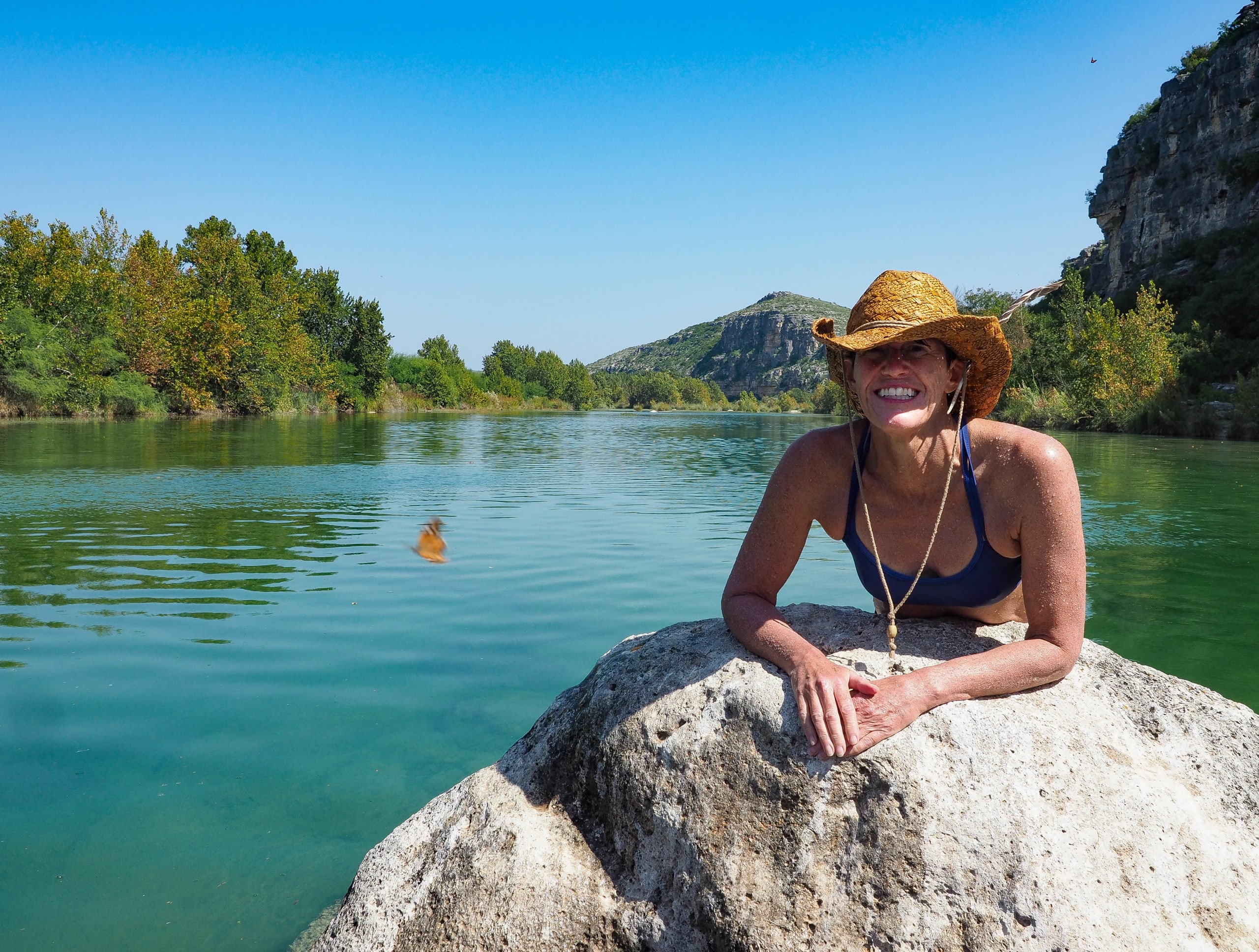
Pam LeBlanc perches on a boulder on the Devils River as monarch butterflies flutter past. Chris LeBlanc photo
Be prepared
A few words of caution. This river isn’t for novices. The rapids –– especially Three Tier Rapids and Indian Creek Rapids –– can mangle boats or snap legs, and if disaster hits, you’re a long way from rescue. We carried a Garmin InReach tracker so we could call for help in event of an emergency and brought along first aid supplies.
This is not a float trip. You have to work to get anywhere. Prepare to get in and out of your boat a lot, especially if the river flow at Baker’s Crossing is below 100 cubic feet per second. We hit lots of bony sections where we ran aground and had to drag short distances. A composite canoe works better than aluminum, which tends to stick to the rough limestone rock like Velcro.
The rapids build as the miles tick past. On the first day, we glided over a few easy riffles. The second, we encountered bigger rapids around Sycamore Chutes. We got out to scout, and Harvey pointed out a channel so skinny I wondered if our boat would fit. It did, and we slid through, reeds slapping us in the face and Chris pushing off rocks with his paddle. We shot over a last big drop by Game Warden Rock, then forged into a headwind as the river flattened out again.

Jimmy Harvey lowers a canoe around Dolan Falls on the Devils River. Pam LeBlanc photo
A special place
By day, we paddled through willows that shed a snowstorm of floating seed pods. Although we briefly swamped a boat or two, we didn’t break a single canoe this time, like I did on one June foray down the river. We napped on rocks in the sunshine and hung hammocks in trees in the evening. We counted shooting stars, sipped hot tea and coffee as the sun rose and listened to noisy kingfishers announce each new day. Some of the folks in our group of six fished. (Bass are catch and release only here, to protect the wild population.) We dragged our boats around Dolan Falls, leaped off rocks into the churning water and laughed until our bellies hurt.

A monarch butterfly lands in a tree at a campsite on the Devils River. Pam LeBlanc photo

Sulphur butterflies gather on the muddy bank of the Devils River. Pam LeBlanc photo
If you make the trip, you’ll understand what makes it so special, and why an organization called the Devils River Conservancy works so hard to keep it clean. The non-profit organization was formed in 2011 to protect it from threats that include invasive species, recreational over-use, land fragmentation, over-pumping of groundwater and more.
That’s important. The river’s gift is serenity and quiet, far from any buzzing city. I want to make sure it stays that way for the next time the Devils lures me back.
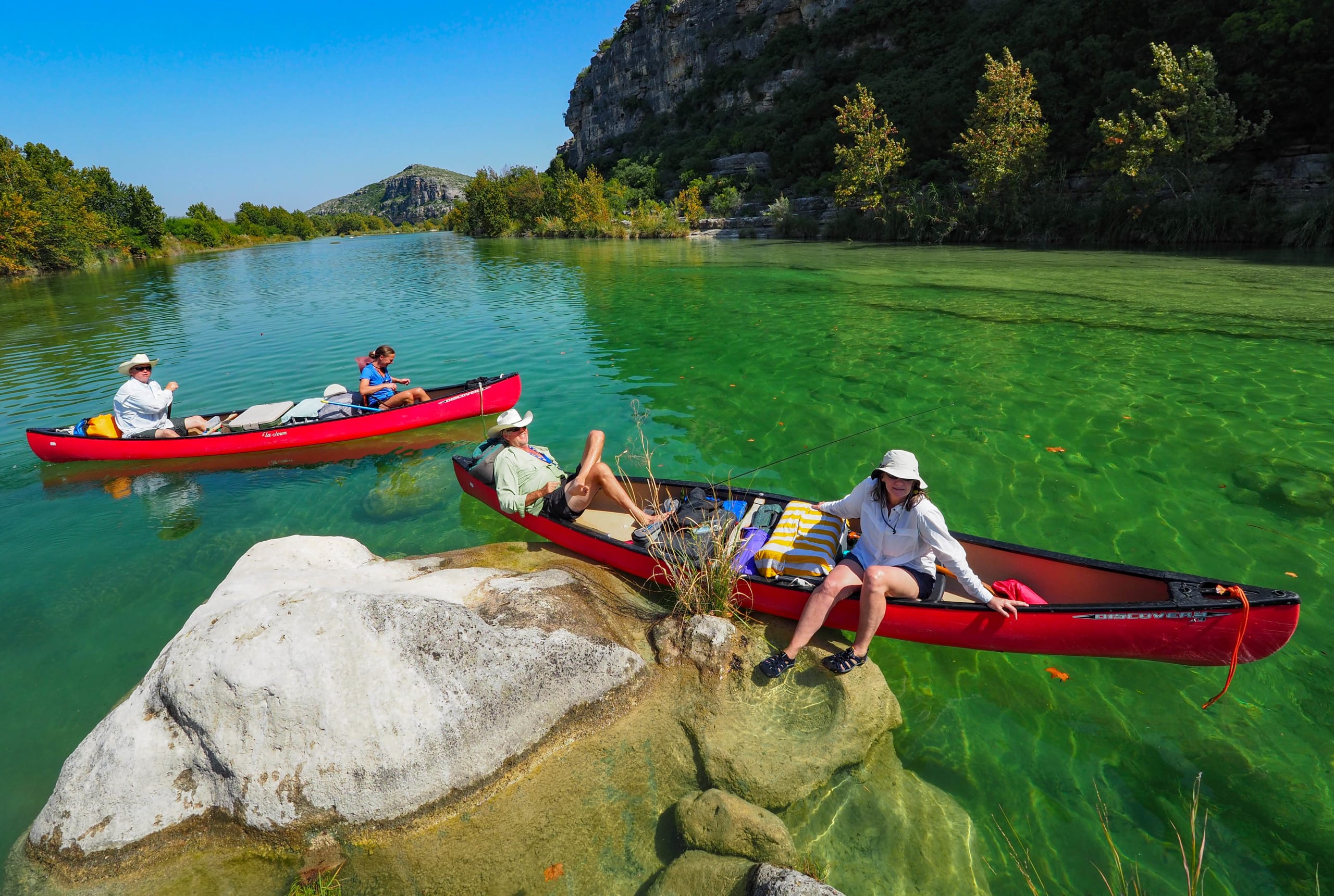
The Devils River is an endless procession of swimming holes. Pam LeBlanc photo
If You Go

Getting there:
From Austin, it’s about a four-and-a-half-hour drive to the Devils River. Put in at Baker’s Crossing on State Highway 163. The best plan is to stay in Del Rio, or at a private home near the river, and shuttle to the put-in early the next morning. Texas Parks and Wildlife lists five outfitters that will shuttle you to the river on its website at https://tpwd.texas.gov/state-parks/devils-river/river-trips/#shuttle-and-guide-service, or hire outfitter Gerald Bailey at 830-703-0089.

Stay:
Book a room at the Hampton Inn or Holiday Inn Express in Del Rio the night before, or stay at Bailey’s rental house. Pack a tent for the river; you’ll be camping along the way.
Do:
Paddle, swim, fish and camp. High season is usually April and May; June can be hot and dry. Check flow at https://www.devilsriverconservancy.org/current-river-conditions before you go, pack personal flotation devices and make sure you’re skilled enough to handle the river.
Eat & Drink:
You’ll pass through Rocksprings on the way. Stop for Thai food at Lotus Thai Café, 103 W. Main St., or grab a burger at the Jail House Bar & Grill, 108 W. Austin Street. On the river, pack a cooler and a camp stove and do it yourself.

Pro Tip:
Buy a pool noodle, cut it into foot-long sections, and slice one side of it so you can slip it over the gunwales of your canoe, just in front of your seat. It’ll keep you from bruising your inner thighs when you climb in and out of the boat to get around obstacles.










